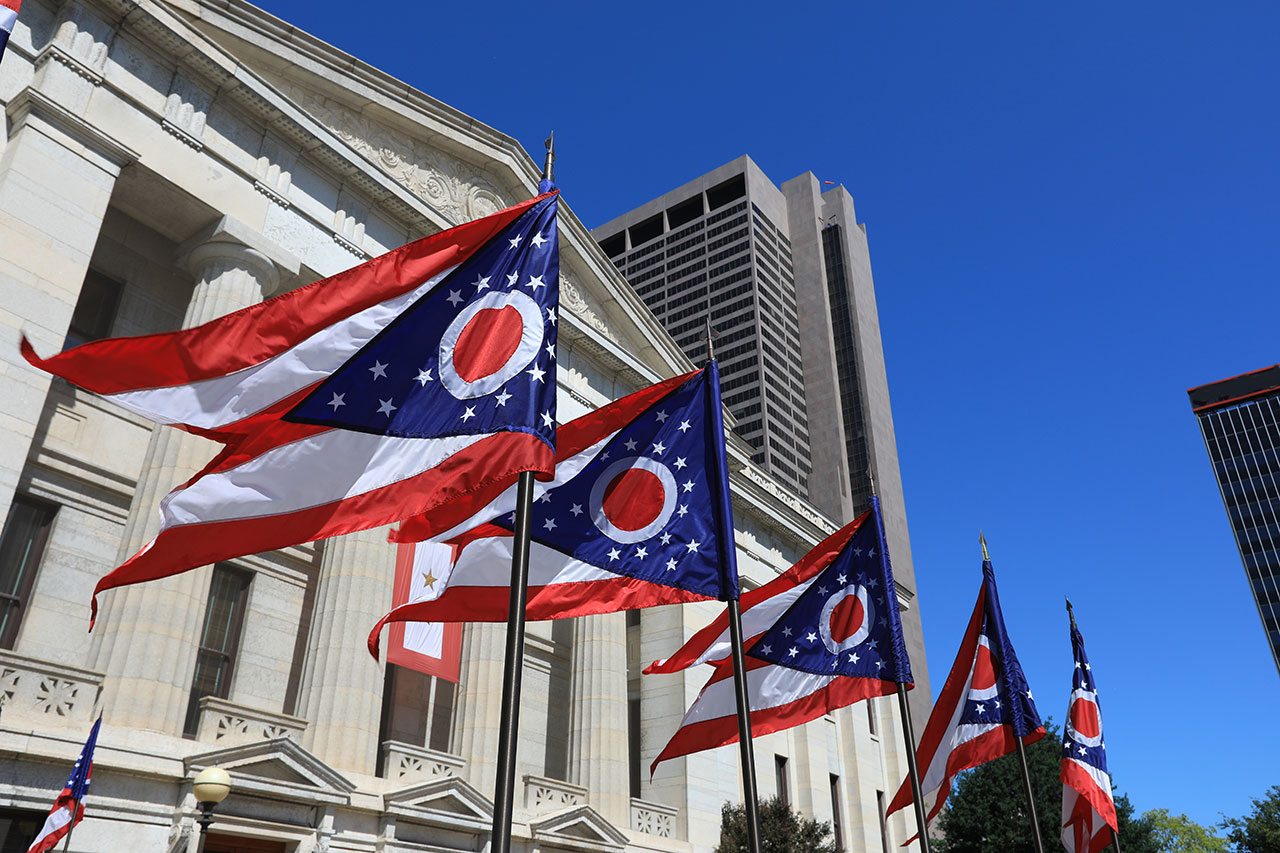
As Goes Ohio, So Goes The Nation
Why protecting the power of the voter matters
By Hannah fried and kayla griffin, all voting is local action
July 20, 2023
As legislatures across the country battle over access to the ballot, Ohio is a grim reminder of what every state in this country will look like if those who seek to deny the right to vote have their way.
Ohio voters are casting their ballots in what may be the state’s most consequential election, ultimately deciding whether to make it harder for Ohioans to amend their constitution. Issue 1 would raise the threshold to approve constitutional amendments to 60 percent, effectively ending majority rule in the state. This would upend 111 years of Ohio history, and make the state an outlier. The question facing voters is ultimately who has the ability to make important decisions about our everyday lives: politicians or the people.
The Ohio legislature passed the resolution that is now Issue 1 earlier this year, before sending it to Ohioans for a vote as the only item on the ballot in the special election on August 8th – an election the very same legislature recently retired due to abysmal turnout. All of this is occurring against the backdrop of Ohioans gathering signatures for an amendment to the constitution that would protect reproductive rights.
As we testified before the Ohio Senate, Issue 1 is “undemocratic, it is unfair, it is unpopular, and it is unnecessary.” But it is not surprising. For the past two decades, Ohioans have faced a concerted effort by lawmakers to suppress their power. Former Secretary of State Ken Blackwell – responsible for overseeing elections in the state – used his time in office to kick off an era of restrictive voting rights in the early 2000s. Cuts to early voting and rollbacks of opportunities to register followed. Amidst all of this, gerrymandering after the 2010 census carved the state up into illogical districts that cemented Republican Party control of Ohio’s U.S. congressional delegation.
Why should this matter to anyone outside of Ohio? The last 20 years in Ohio show that despite its waning battleground status in national elections, Ohio remains a bellwether – if not for presidential politics then for the state of voting rights.
While anti-voter advocates across the country try to push through restrictions under the guise of “election integrity,” 20 years of steady and effective degradations of the right to vote have empowered Ohio leaders to take increasingly extreme approaches. In the summer of 2020 – when other states were expanding access to the ballot so Americans could vote safely amidst the COVID-19 pandemic – Black union leaders asked Secretary of State Frank LaRose’s office to help voters avoid the dangers of COVID-19 by allowing them to return their ballots outside in secure drop boxes. The office callously responded by reaching out to Hans von Spakovsky, a prominent architect of anti-voter laws – and limited the drop boxes to one per county. Outrageously, state law now requires Cuyahoga County (population: 1.24 million), home to Cleveland, to have exactly the same number of early voting and ballot drop box locations as Vinton County with 12,600 residents: one.
While many states use the controversial practice of removing voters from the voting rolls without adequate safeguards, Ohio’s 2018 inept voter purge conducted by LaRose’s office even tried to remove the president of The League of Women Voters of Ohio from the voter rolls. (If you’re wondering if she was still an active voter, she was). On Jan 6, 2023 – two years to the date of a literal attack on our democracy – Ohio Governor Mike DeWine signed into law one of the strictest voter ID laws in the nation, making it harder for students, veterans, and other Ohioans to cast a ballot.
And perhaps most alarmingly, Ohio stands with Florida, Virginia, Georgia, and Texas as a dystopian trailblazer, resurrecting the institution of “election police,” which originated with the Klu Klux Klan during Reconstruction to suppress and intimidate Black voters. Thus far these politicized police units have proven to be highly ineffective at anything other than wasting taxpayer funding and sowing further distrust in our elections.
If you don’t think laws like these are coming to a state near you, think again. For more than a decade, anti-voter powerbrokers, backed by serious funding, have seeded legislative victories in one state as a way of normalizing outrageous anti-voter laws, and then introduced those restrictions in new states in a domino effect of voter suppression. Stopping these practices in one state holds off not only the introduction of even worse policies within its borders – but stops the onslaught next door and beyond.
Now, Ohioans have a chance to turn the tide in their state – and send a message to the country as a whole. Voting against Issue 1 is an act of reclaiming their power and stemming two decades’ worth of anti-democratic slide. A “no” vote cements the notion that power over the future of our states and our country belongs with the people – not politicians who have spent two decades (and longer than that) manipulating and abusing voting rules. As Ohioans go to the polls to decide who holds the cards in their state, they have the opportunity to make their state a positive model to us all – demonstrating that the American people can overcome even the most persistent efforts to deny them their democratic rights.
After all, as Ohio goes, so goes the nation.